Minima Domain Intervals and the S-Convexity, as well as the Convexity, Phenomenon ()
1. Introduction
We have been working on refining and improving, as well as fixing, the definition of the s2-convex classes of functions for a while now (since 2001). The concept Sconvexity is supposed to be a proper extension of the concept Convexity, what then implies that some of our proposed modifications may, if “universally” accepted, affect the definition of the convex class of functions.
This piece of work presents argumentation in favor of an explicit reference to a minimum necessary interval of domain in the analytical definition of the s2-convex classes of functions.
The sequence of presentation of this paper is:
• Introduction;
• Analytical definition of the phenomenon s2-convexity and symbology;
• Geometric definition of the phenomenon s2-convexity;
• Argumentation defending an explicit reference to a minimum interval of domain in the analytical definition of the s2-convex class of functions;
• Proposed definition;
• Conclusion;
• References.
2. Analytical Definition of the Phenomenon s2-Convexity and Symbology
• 2.1. Symbols [1]
•  stands for the set of S-convex classes of type 2;
stands for the set of S-convex classes of type 2;
•  is the real number to replace s2 in the expression “s2-convex”, therefore the number to actually select one class amongst the so many possible s2-convex classes of functions;
is the real number to replace s2 in the expression “s2-convex”, therefore the number to actually select one class amongst the so many possible s2-convex classes of functions;
•  is a mathematical synonym for the class convex functions.
is a mathematical synonym for the class convex functions.
2.2. Definitions [2]
Definition 1. A function , where
, where 
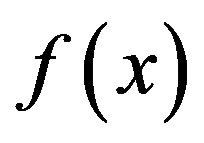 , is told to belong to
, is told to belong to  if the inequality
if the inequality

holds ;
; ;
;  ;
; .
.
Definition 2. A function , where
, where 
 , is told to belong to
, is told to belong to  if the inequality
if the inequality

holds ;
; ;
;  ;
; .
.
Remark 1. If1 the inequality is obeyed in the reverse2 situation by f, then f is said to be s2-concave.
3. Geometric Definition of the Phenomenon s2-Convexity
Definition 3. A real function  is called convex if and only if, for all choices
is called convex if and only if, for all choices  and
and , where
, where ,
,  ,
, 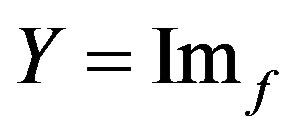 , and x1 ≠ x2, it happens that the chord drawn between
, and x1 ≠ x2, it happens that the chord drawn between  and
and  does not contain any point with height, measured against the vertical cartesian axis, that be inferior to the height of its horizontal equivalent in the curve representing the ordered pairs of f in the interval considered for the chord.
does not contain any point with height, measured against the vertical cartesian axis, that be inferior to the height of its horizontal equivalent in the curve representing the ordered pairs of f in the interval considered for the chord.
Remark 2. Notice that, to extend the above geometric definition, one needs to come up with a limiting geometric line connecting the same set of points ,
,  , but a line that lie above the chords in at least some piece of it. Furthermore, it is clearly the case that one must have a continuous line as curve for f (otherwise, we give margin to doubts in the mathematical decisions to be made when comparing the chord with the line), what then implies that if a real function f is s2-convex in
, but a line that lie above the chords in at least some piece of it. Furthermore, it is clearly the case that one must have a continuous line as curve for f (otherwise, we give margin to doubts in the mathematical decisions to be made when comparing the chord with the line), what then implies that if a real function f is s2-convex in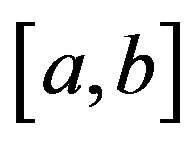 , then it is continuous in
, then it is continuous in .
.
4. Argumentation Defending an Explicit Reference to a Minimum Interval of Domain in the Analytical Definition of the s2-Convex Class of Functions
One of the major criticisms to S-convexity is that clear inconsistency is found when putting the geometrical definition against the analytical one.
The geometric definition of Convexity, therefore also of S-convexity, DOES imply that the right side of the inequality forms a line, not mattering if curved or straight. The only way to generate this line, minimum condition of existence for it, is that , therefore
, therefore ,
, .
.
One needs more than one point to form a line; in fact, an infinite number of points is needed, therefore an interval, a minimum interval. Because we do not find mention to such an interval so far in the definitions, there is a clear omission in the analytical definition of S-convexity, therefore in the definition of convexity.
The necessity of the minimum interval is quite obvious: x must be different from y in all definitions (coherence of the geometric and analytical definitions) and the mention to a piece X, from the real numbers, usually excludes the possibility of X being a degenerated interval (elegance).
Nothing could be more appropriate than adding a “distance element” to the current analytical definition, therefore.
Let’s call this distance element .
.
Given the nature of , read from the previous paragraphs, it can only be that
, read from the previous paragraphs, it can only be that .
.
Notice that the current definition of S-convexity deals with a vector in , but its current domain is in
, but its current domain is in  and so we want it to be in order to have the analytical definition matching the geometrical one.
and so we want it to be in order to have the analytical definition matching the geometrical one.
To take away one dimension from the definition, it suffices that we replace y with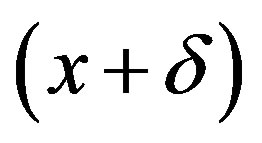 , action that will also address our minimum interval problem.
, action that will also address our minimum interval problem.
5. Proposed Definition
Definition 4. A function , where
, where 
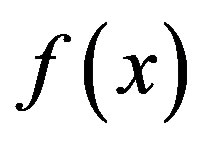 , is told to belong to
, is told to belong to  if the inequality
if the inequality

holds 
 ;
; ;
;  ;
; .
.
Definition 5. A function , where
, where 
 , is told to belong to
, is told to belong to  if the inequality
if the inequality

holds 
 ;
; ;
;  ;
; .
.
Remark 3. If3 the inequality is obeyed in the reverse4 situation by f, then f is said to be s2-concave.
6. Conclusions
In this short note, we have proposed more modifications to the analytical definition of the phenomenon S-convexity.
This time, our proposed modifications, if accepted, will affect the number of variables and the domain interval in the definition of S2-convexity.
Our proposed wording for the definition of the phenomenon S2-convexity brings  in place of y and limits
in place of y and limits  in order to guarantee both that the domain interval be not degenerated and that
in order to guarantee both that the domain interval be not degenerated and that  be inside of the boundaries of the domain.
be inside of the boundaries of the domain.
NOTES
2Reverse here means >, not .
.
3This remark applies to both definitions preceding it.
4Reverse here means >, not .
.